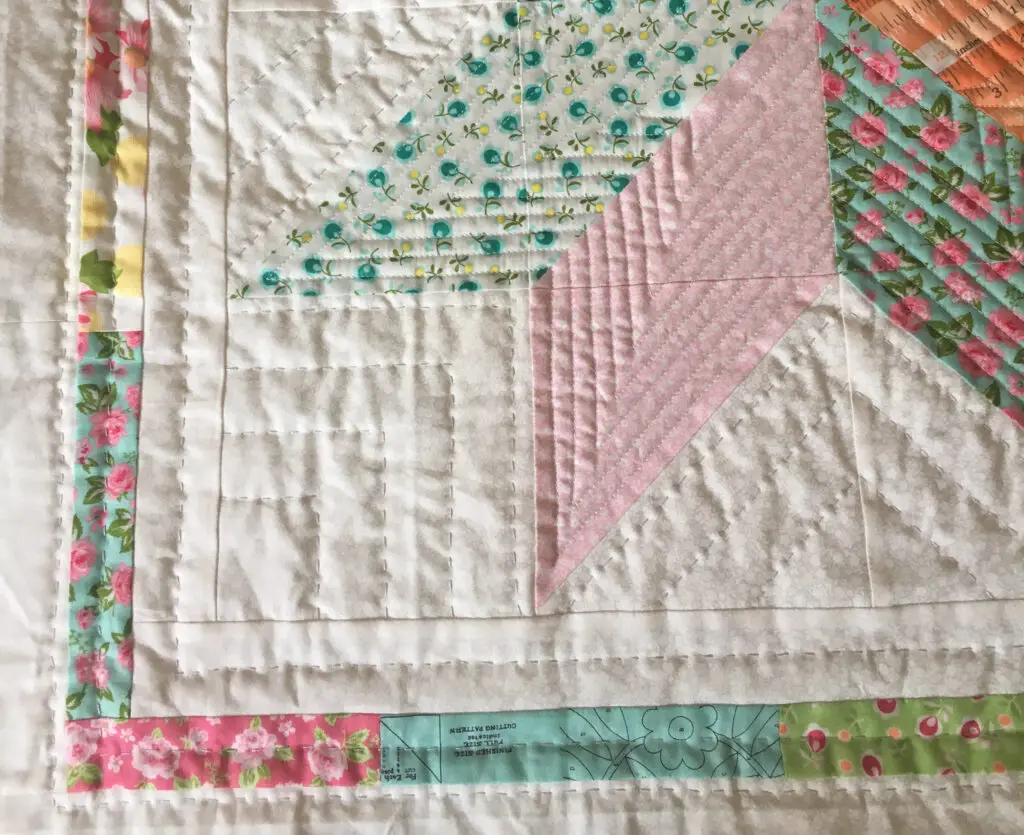If you’re looking for a way to finish your quilt without needing a hoop, then this article is for you. We’ll discuss how to hand quilt without a hoop and provide a step-by-step guide to help you complete your quilt. We’ll cover everything from the necessary materials to the best way to quilt without a hoop. By the end of this article, you’ll be well on your way to hand quilting without a hoop and creating a beautiful piece of handmade art.
Why Hand Quilt With a Hoop?
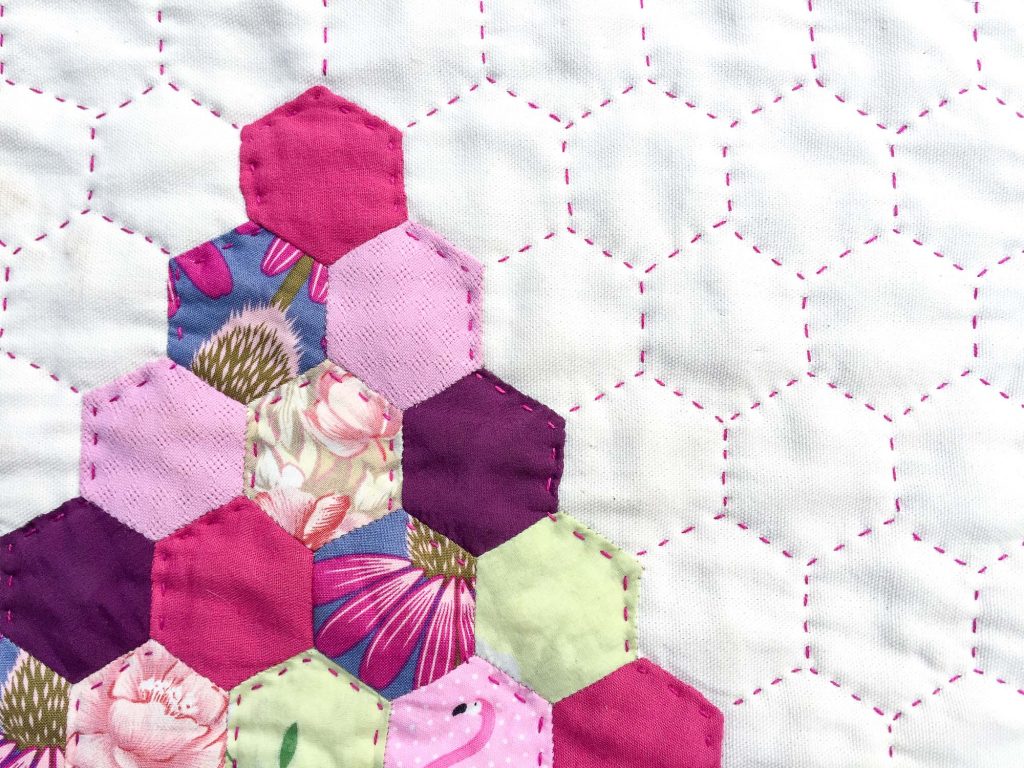
Hand quilting with a hoop is an important part of the quilting process and provides a number of benefits. It can be an easier and more efficient way to quilt a quilt. Some of the advantages of hand quilting with a hoop include:
- Stability – The hoop provides a stable surface for quilting, eliminating the need to constantly adjust the quilt while stitching. This helps to create more consistent stitches and prevents the fabric from shifting.
- Control – The hoop also provides an easy way to control the tension of the quilt. The hoop helps keep the fabric taut, preventing puckers and other irregularities.
- Portability – Hoops are also lightweight and easy to transport, making it easy to take your quilting projects on the go.
Hand quilting with a hoop is a great way to make sure your quilts look their best. It can also make the quilting process easier and more efficient. Whether you are a beginner or a seasoned quilter, using a hoop while hand quilting can help you create beautiful quilts.
How to Hand Quilt With a Hoop
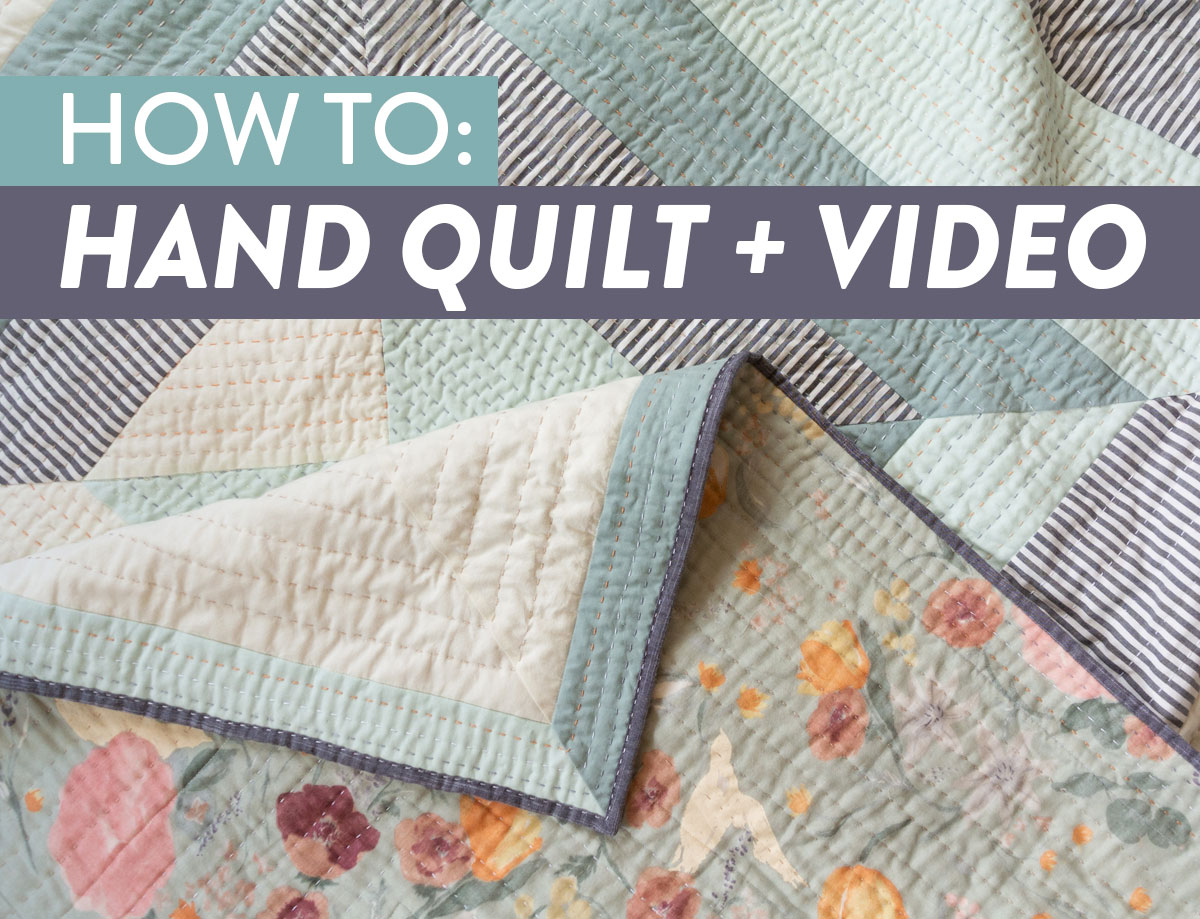
| Step | Description |
|---|---|
| 1 | Gather necessary supplies. You will need a quilting hoop, quilt batting, a quilt top, backing fabric, quilting thread, scissors, and a needle. |
| 2 | Lay a piece of backing fabric and batting on the floor. Place the quilt top over the batting and backing fabric, ensuring all edges are lined up. |
| 3 | Stretch the batting and backing fabric over the quilting hoop, ensuring it is taut. |
| 4 | Thread a needle with quilting thread and tie a knot at the end. |
| 5 | Begin hand quilting by pushing the needle through the top fabric and backing fabric, making small stitches. |
| 6 | Continue hand quilting until the quilt is finished. How long does it take to hand quilt a quilt depends on its size and the intricacy of the pattern. |
| 7 | Secure the thread by making a few stitches on the back of the quilt or knotting the thread. |
How to Hand Quilt Without a Hoop
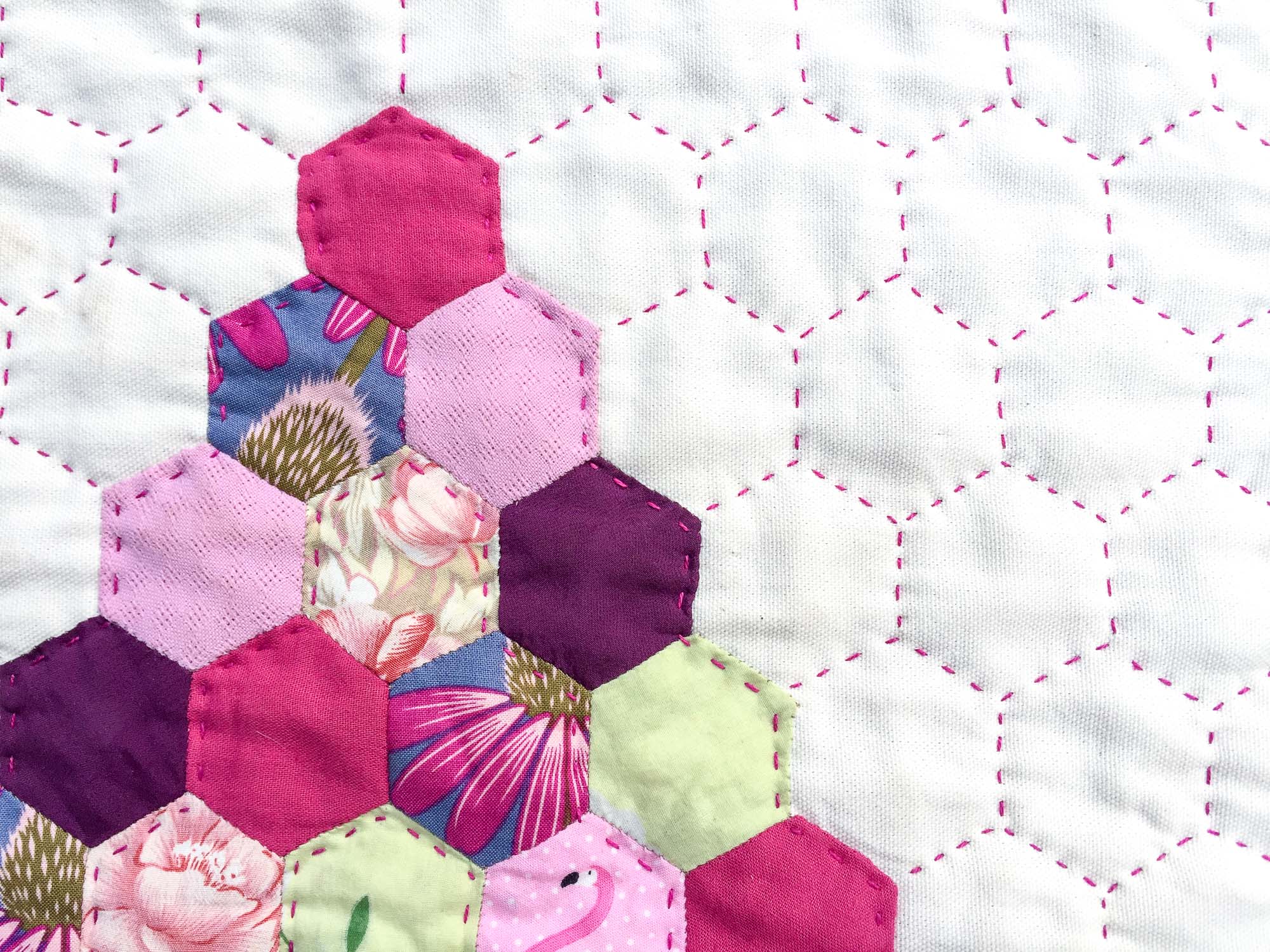
Steps to Hand Quilt Without a Hoop
Hand quilting without a hoop is a great way to add a unique touch to your quilt. It takes a bit of practice and patience to master, but it’s a skill that can be learned and mastered with some practice. To begin hand quilting without a hoop, you will need to gather the supplies you need. These include quilt batting, a quilting needle, quilt thread, and a thimble. Once you have these items, you will be ready to start hand quilting.
The first step is to create a quilting line. This can be done by tracing a pen or pencil along the quilting pattern you desire. Once the quilting line has been laid out, you will need to thread the quilting needle. This is done by looping the thread around the needle and pulling it tight.
Next, you will need to begin stitching. Start by pushing the needle through the quilt batting, making sure to keep the thread taut. Once you have completed one stitch, bring the thread up and make a loop. Make sure the stitch is tight to keep the quilt batting together. Continue stitching in this manner until you have completed the quilting line.
Benefits of Hand Quilting Without a Hoop
Hand quilting without a hoop has many benefits. First, it takes much less time than quilting with a hoop. As you don’t need to constantly reposition the hoop, it’s much easier to get the quilting done in a shorter amount of time. Additionally, hand quilting without a hoop allows for much more flexibility when it comes to creating a quilting pattern. You can create unique, intricate designs that may not be achievable with a hoop. Finally, hand quilting without a hoop is much more affordable than traditional hooped quilting.
Overall, hand quilting without a hoop is a great option for those who want to add a unique touch to their quilt. With some practice and patience, you can create beautiful quilts that will be admired for years to come.
How Long Does it Take to Hand Quilt?

Hand quilting can be a time-consuming task, but the amount of time required to complete a quilt varies greatly depending on the size, complexity, and chosen quilting designs. Generally, a small quilt that measures 36 by 36 inches and consists of simple quilting designs may take 3 to 5 hours to complete. A larger quilt that measures 90 by 90 inches and contains intricate quilting designs may take 40 hours or more to finish.
For those who wish to hand quilt without a hoop, the process can take even longer. Without the benefit of a quilting hoop to hold the quilt in place, quilters must rely on their hands to keep the quilt steady, which can lead to fatigue and reduce the quilter’s speed. Therefore, it is important to take regular breaks when hand quilting without a hoop to give your hands a rest and prevent strain.
The amount of time it takes to hand quilt depends on multiple factors, such as the size of the quilt and the complexity of the quilting designs. To efficiently hand quilt without a hoop, it is essential to use the right supplies and to practice quilting regularly. With the right supplies and practice, you can create beautiful quilts in no time.
| Size | Designs | Time to Hand Quilt |
| 36 by 36 inches | Simple | 3 to 5 hours |
| 90 by 90 inches | Intricate | 40 hours or more |
It is possible to reduce the amount of time it takes to hand quilt without a hoop by using the right supplies, such as a comfortable work surface, a quilting frame, and a pair of quilting gloves. Additionally, it is important to practice quilting regularly in order to become more efficient. With the right supplies and practice, you can create beautiful quilts in no time.
How to Hand Quilt a Large Quilt Without a Hoop
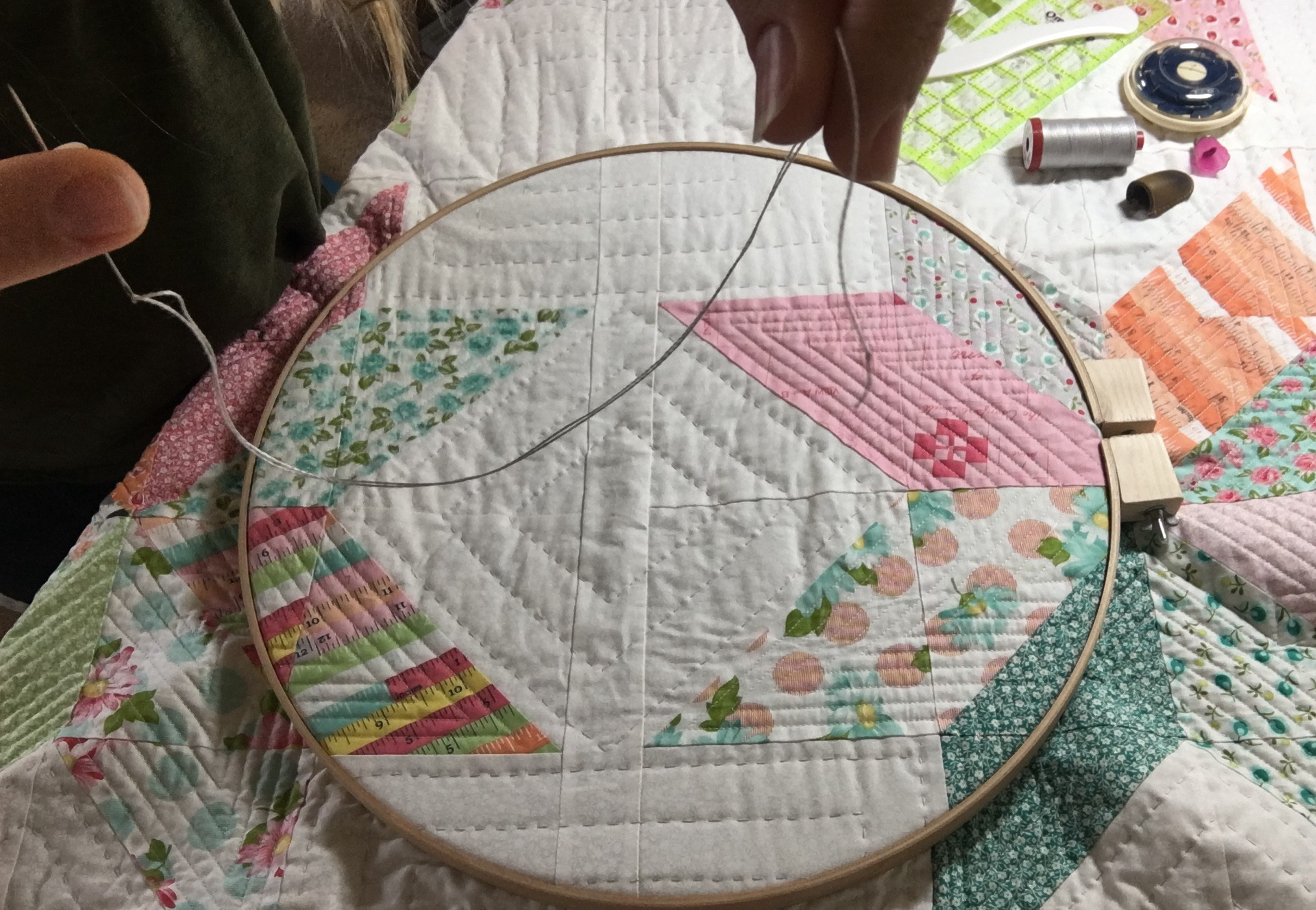
Step 1: Prepare the Quilt
- Lay the quilt on a flat surface, such as a table or the floor.
- Check that all edges of the quilt are even and flat.
- Smooth the quilt top and backing, making sure that there are no wrinkles or folds.
Step 2: Secure the Quilt
- Thread a large-eyed hand needle with quilting thread.
- Starting in the middle of the quilt, begin to stitch a running stitch around the perimeter of the quilt.
- Stitch around the edges of the quilt, making sure to keep the stitches as even as possible.
- When you reach the beginning of your stitch, tie off the thread to secure the quilt.
Step 3: Begin Quilting
- Select a quilting pattern and mark it on the quilt using a fabric marker.
- Starting in the middle of the quilt, begin to quilt using a small running stitch.
- Work your way outwards towards the edges of the quilt, making sure to keep the stitches even.
- Make sure to quilt the entire quilt, including the edges.
Step 4: Finishing Touches
- Once you have finished quilting the entire quilt, remove the fabric marker.
- Make sure to remove any excess threads from the quilt and trim the edges.
- If desired, add a quilt label with the name of the quilt and the quilter.
Tips for Hand Quilting Without a Hoop
Stabilize the quilt
Without a hoop, the quilt must be held in place while quilting. A quilt frame can be used to keep the quilt taut while stitching, or the quilt can be basted to a piece of batting. To baste the quilt to batting, pin the quilt to the batting and stitch in the ditch along the seams.
Use the right type of needle
A sharp hand quilting needle is ideal for stitching without a hoop. The needle should have a long eye and a sharp point.
Thread choice
Choose a thread that is strong and durable. Cotton, polyester, and silk threads are all suitable for hand quilting.
Proper lighting
When working without a hoop, it is important to have adequate lighting. Good lighting will help you see the stitches more clearly and make it easier to quilt accurately.
Use the right amount of tension
To get the best results when quilting without a hoop, you need to use the correct amount of tension when stitching. Too little tension will cause the stitches to be uneven and loopy, while too much tension can cause puckers in the quilt.
Take your time
Quilting without a hoop takes time and patience. Take your time and make sure that each stitch is even and consistent.
Frequently Asked Questions
What Tools Do I Need to Hand Quilt Without a Hoop?
To hand quilt without a hoop, you will need a quilting needle, quilting thread, and quilting batting. You will also need a thimble, scissors, and marking pens or pencils for marking the quilt top. An iron and pressing mat can also be helpful for keeping the quilt top smooth.
What is the Best Technique for Hand Quilting?
- Start in the Middle: Begin quilting in the middle of the quilt and work outward. This will help to keep the stitches even and the quilt symmetrical.
- Small Stitches: Use small stitches and keep them even and consistent. Avoid long stitches as they can be more prone to snags and tears.
- Use a Thimble: A thimble on the index finger of the dominant hand increases grip and helps to push the needle through the quilt.
- Use a Seam Ripper: Mistakes happen. A seam ripper will help remove any stitches that were not meant to be in the quilt.
- Quilt with the Grain: Move the quilt in the same direction as the fabric grain to prevent warping.
- Secure Your Threads: Make sure to tie off all threads and secure them to the back of the quilt.
How do I prevent my stitching from becoming uneven?
To ensure even stitches, use a thimble or thimble protector, and a needle threader to ensure the thread is properly secured. When quilting, hold your fabric taut and make sure each stitch is the same length. Keep your stitches small and consistent, and use the same amount of pressure with each stitch. When stitching, use the same angle, and stitch in the same direction. If you are not satisfied with a stitch, simply remove it with a seam ripper.
How can I best avoid hand fatigue while quilting?
- Take breaks: To reduce hand fatigue while quilting, it is important to take breaks. Set an alarm or timer to remind you to stop and rest every 30 minutes or so. You should also take a longer break after an hour or two of quilting.
- Use the correct grip: It is important to use the correct grip while quilting to avoid hand fatigue. Make sure that your hand remains loose and relaxed while you are stitching. You should also have your needle directly in line with your index finger, which will help reduce fatigue.
- Use the right needle: Using the right needle for the job is essential to reducing fatigue. Choose a needle that is the right size for the type of fabric and thread you are using. It is also important to use a sharp needle, as a dull needle will require more effort to penetrate the fabric.
- Wear gloves: Wearing gloves can help reduce hand fatigue while quilting, as the gloves will absorb some of the friction and pressure. Choose gloves that are specifically designed for quilting, as they are more comfortable and provide better grip.
- Position yourself correctly: Make sure that you are sitting in a comfortable position while quilting. You should have your back supported and your arms at a comfortable angle. Make sure that you are not straining your wrists or arms while quilting.
- Use the right tools: Using the right tools is essential to avoiding hand fatigue while quilting. Choose tools that are designed to make quilting easier, such as thimbles, hoop holders, and quilting gloves.
How do I ensure my quilt is finished evenly and securely?
- Secure the quilt layers. Before starting to quilt, make sure to secure the three layers of the quilt top, batting, and backing fabric together. This can be done by basting the layers together with safety pins or by using a sewing machine.
- Use a quilting frame. If you don’t have a hoop, consider using a quilting frame. This will help keep the quilt layers taut and even and make the quilting process much easier.
- Finish the quilting stitches. When you finish quilting, make sure to secure the stitches with a few extra stitches at the end of each quilting line. This will help ensure that the quilt is evenly quilted and the stitches don’t come undone.
- Finish the edges. To ensure your quilt is finished evenly and securely, it is important to finish the edges. You can do this by using a binding to cover the edges or by using a whip stitch to conceal the raw edges.
Conclusion
Hand quilting without a hoop can be a rewarding experience for anyone looking to take their quilting to the next level. With the right set of supplies and a bit of patience, anyone can complete a beautiful quilt using this method. All it takes is a little practice, and soon you’ll be a pro.
